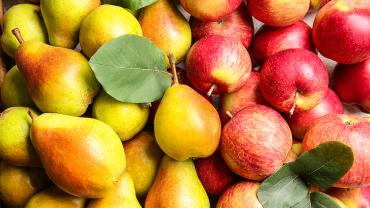
Polyphenols are bioactive phytonutrients, or plant compounds, located in all plant foods, such as vegetables, fruit, cocoa, tea, and coffee. There are more than 500 different polyphenols that have been identified, and they can be divided into four main categories: flavonoids, phenolic acids, stilbenes, and lignans. Polyphenols have been called lifespan essentials because they are necessary for an individual’s full lifespan due to their potent antioxidant properties that may help reduce the risk of chronic diseases.
Recent research is investigating how the intake of polyphenols among adolescents (aged 10 to 19 years) may be helpful to promote healthy eating behaviors and attenuate dietary-related chronic diseases during adulthood. A systematic review looked at 91 studies and found that U.S. adults had some of the lowest total flavonoid intakes (approximately 200 mg per day) compared to European and Australian adults (approximately 600 mg per day). Adolescence may be considered a critical period influencing lifestyle, dietary habits, chronic diseases, and overall health into adulthood.
Obesity, blood sugar dysregulation, and chronic inflammation may emerge during adolescence, which may possibly track into adulthood. One prospective study (n = 230) provided both dietary and urinary data on how adolescent flavonoid intake influenced the onset of adult type 2 diabetes mellitus. The researchers observed that adolescents with higher habitual flavonoid intakes from fruits and vegetables displayed lower risk factors for type 2 diabetes mellitus in early adulthood. Moreover, their study indicated that one to two portions of flavonoid-rich fruits and vegetables per day during adolescence may have considerable long-term benefits for blood sugar regulation, liver health, and general inflammation.
Adolescence is a time when individuals start to make their own food choices and many individuals may develop unhealthy habits. This is why it is common for polyphenol intake to be low during adolescence and for signs of low-grade inflammation to already be present. A cross-sectional clinical study (n = 526) examining European adolescents aged 12.5 to 17.5 years concluded that individuals with a higher total polyphenol intake had reduced serum pro-inflammatory and anti-inflammatory biomarker ratios that may attenuate inflammation-related chronic diseases.
A similar cross-sectional study (n = 2,428) among adolescent Europeans found polyphenol intake came primarily from fruit (mainly apples and pears), chocolate products, and fruit and vegetable juices. The mean intake of polyphenols was 329 mg per day. Furthermore, the consumption of fruits and vegetables in this population was still only half of the recommended amount. This may be due to the large amounts of sweets and snacks consumed by adolescents instead of fruits and vegetables.
These studies support the importance of promoting fruit and vegetable consumption to increase total polyphenol intake during and after adolescence, as this may attenuate chronic diseases, oxidative stress, and inflammation. Owing to many children and teenagers’ dietary preferences and accessibility, this may prove to be difficult. As a result, supplements containing phytonutrients or polyphenols may be warranted to help support overall health and antioxidant activity.
By Danielle Moyer, MS, CNS, LDN